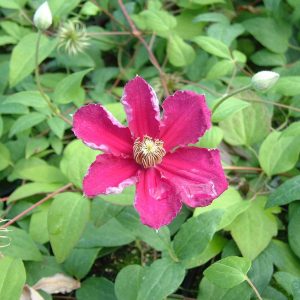Description
Mentha spicata, also known as spearmint, is a perennial herb in the Lamiaceae family. It is native to Europe and Asia but is now widely cultivated around the world. It is known for its distinctive, fresh, minty aroma and flavor, and for its long, pointed leaves that are typically green in color. The leaves can be used fresh or dried to flavor a variety of dishes, particularly in Mediterranean and Middle Eastern cuisine, and also to make teas and other beverages. The plant also produces small, purple flowers that are not edible. It is a hardy and easy to grow plant that prefers moist, well-drained soil and partial to full sun. It can be invasive if not kept in check, so it’s best to grow it in a container or in a designated area of the garden.
Key Facts
- Common Name(s):Garden Mint
- Hardiness:Fully hardy
- How big will I get? Mentha x spicata can grow to a height of 1m and a spread of 1.5m.
- Did You Know That:Mint is a fast-growing plant, it can quickly spread through underground runners and can become invasive if not controlled?
Plant Calendar
A rough guide to how this plant will change through the year.
| Jan | Feb | Mar | Apr | May | June | July | Aug | Sept | Oct | Nov | Dec | |
| Flowering Time |  |
 |
 |
|||||||||
| Foliage Colour |  |
 |
 |
 |
 |
 |
 |
 |
 |
| J | F | M | A | M | J | J | A | S | O | N | D |
 |
 |
 |
|||||||||
 |
 |
 |
 |
 |
 |
 |
 |
 |
Care Guide

Soil Requirements
Mentha x spicata thrives in wet or damp soil with decent drainage or in poorly draining soil. This plant can grow in soil with a wide range of pH levels, it is not picky about the pH level of the soil.

Best Position
Mentha x spicata can handle either an exposed or a sheltered position and can cope with either full sun or partial shade.

Maintenance
Mentha x spicata should be cut back after it finishes flowering will promote growth the following year by redirecting energy from seed production and foliage maintenance to root growth.

Pest, Diseases and Wildlife
Mentha x spicata is generally pest free, it can be vulnerable to certain diseases such as powdery mildews and rust. It is also known to attract bees, butterflies and other pollinators. It is toxic to cats and dogs.





